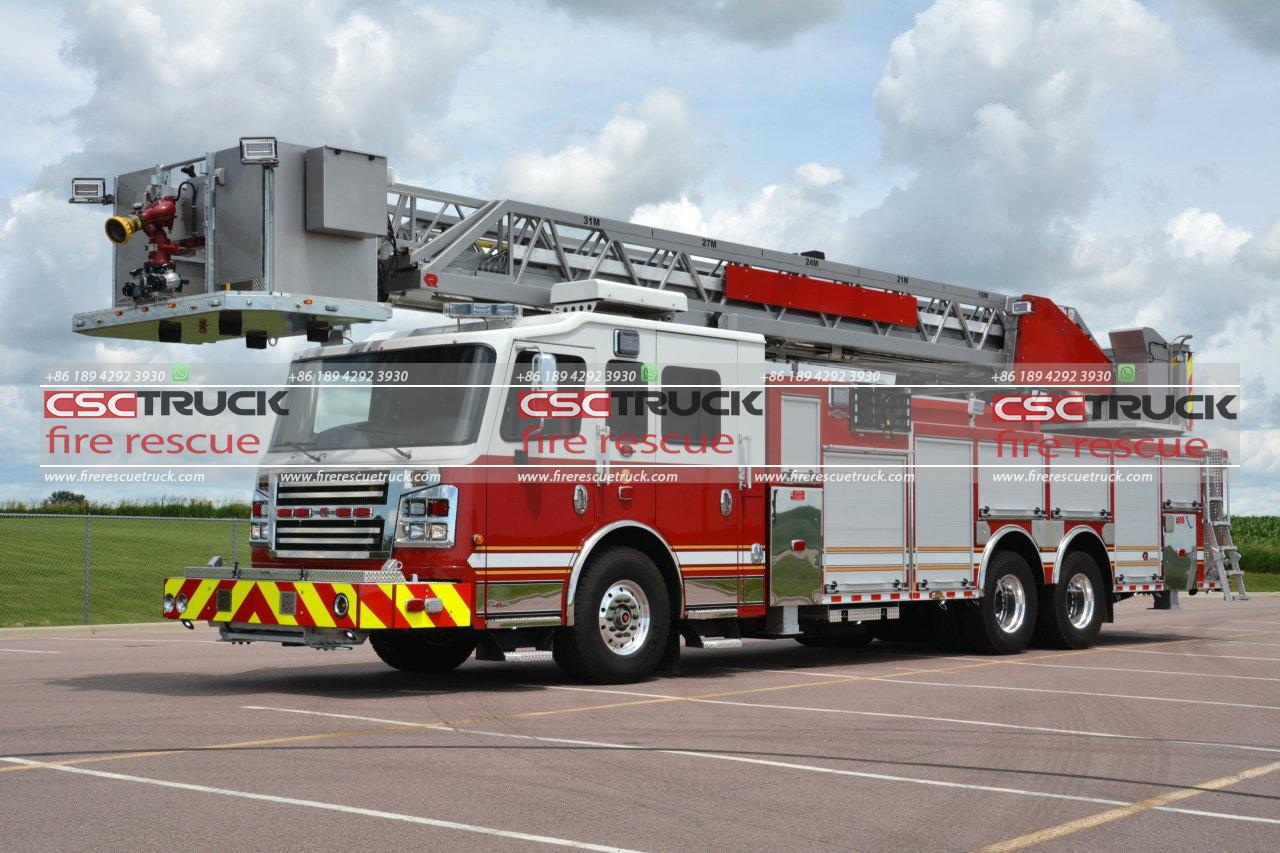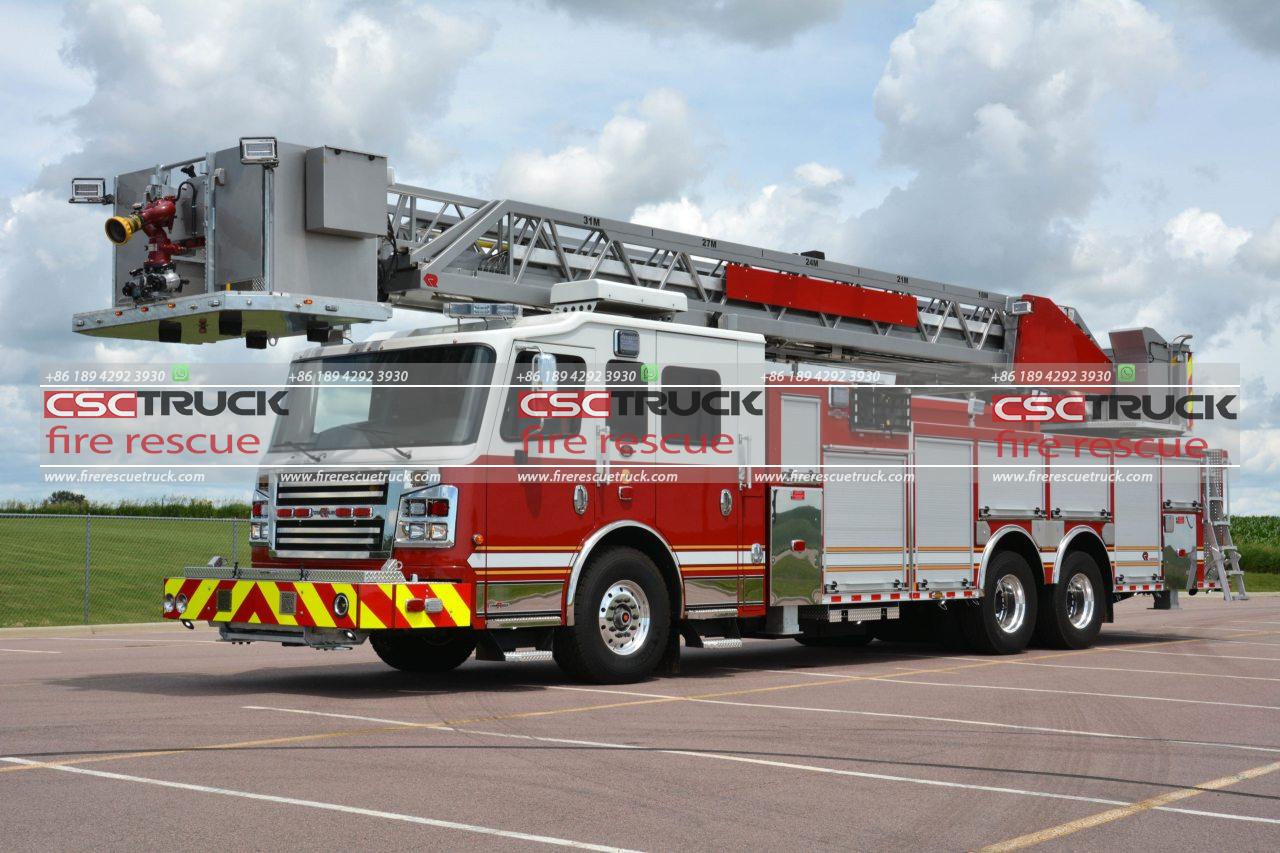Aerial fire trucks are a vital part of the firefighting arsenal. They provide firefighters with the ability to reach elevated areas that would be otherwise inaccessible, making them essential for fighting fires in high-rise buildings, apartment complexes, and other tall structures. Aerial fire trucks can also be used for rescue operations, such as rescuing people from burning buildings or from other dangerous situations.
There are several different types of aerial fire trucks, each with its own unique capabilities. The most common type is the aerial ladder truck, which features a telescoping ladder that can extend up to several hundred feet. Aerial platform trucks have a basket that can be raised and lowered to reach people or objects at high altitudes. Water towers are another type of aerial fire truck, and they feature a large water tank that can be used to fight fires from a distance.
Aerial fire trucks are complex pieces of equipment, and they require specialized training to operate safely and effectively. Firefighters who operate aerial fire trucks must be familiar with the different types of aerial devices, as well as the safety procedures that must be followed when operating these devices.
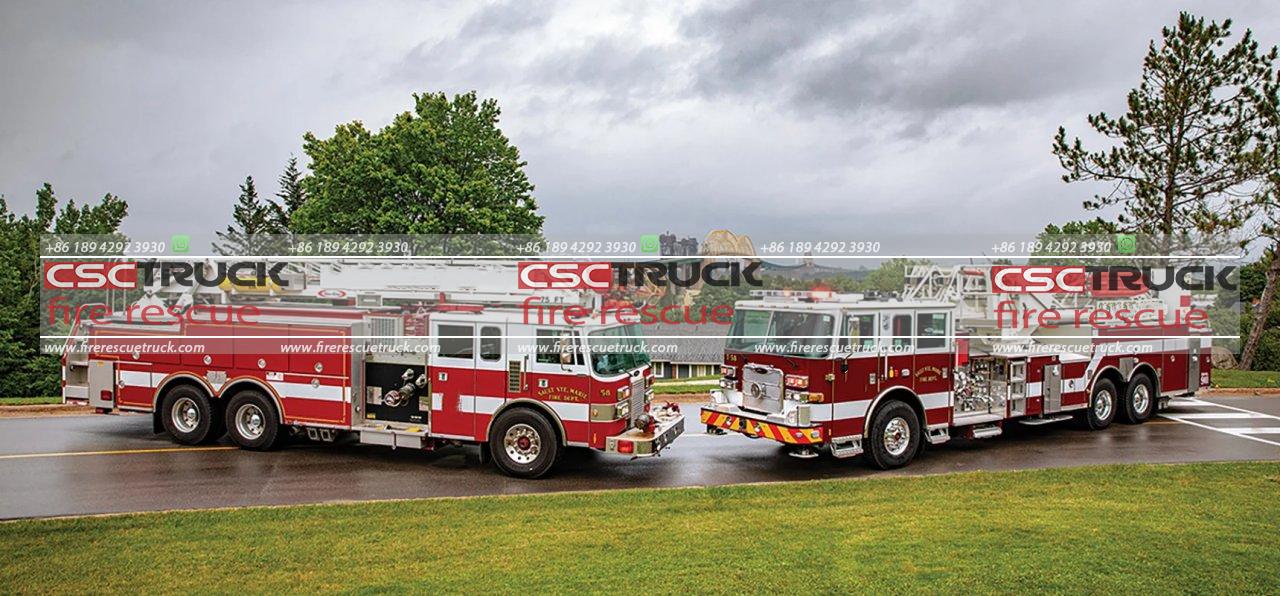
Types of Aerial Fire Trucks
There are several different types of aerial fire trucks, each with its own unique capabilities. The most common type is the aerial ladder truck, which features a telescoping ladder that can extend up to several hundred feet. Aerial platform trucks have a basket that can be raised and lowered to reach people or objects at high altitudes. Water towers are another type of aerial fire truck, and they feature a large water tank that can be used to fight fires from a distance.
- Aerial Ladder Trucks
Aerial ladder trucks are the most common type of aerial fire truck. They feature a telescoping ladder that can extend up to several hundred feet. The ladder is typically made of aluminum or steel, and it can be raised and lowered using a hydraulic system. Aerial ladder trucks are typically equipped with a basket that can be used to transport firefighters and equipment to elevated areas.
- Aerial Platform Trucks
Aerial platform trucks are similar to aerial ladder trucks, but they have a basket that can be raised and lowered to reach people or objects at high altitudes. The basket is typically attached to a hydraulic arm, and it can be rotated 360 degrees. Aerial platform trucks are often used for rescue operations, such as rescuing people from burning buildings or from other dangerous situations.
- Water Towers
Water towers are another type of aerial fire truck. They feature a large water tank that can be used to fight fires from a distance. The water tank is typically mounted on a tower, and it can be raised and lowered using a hydraulic system. Water towers are often used in rural areas where there is no access to municipal water supplies.
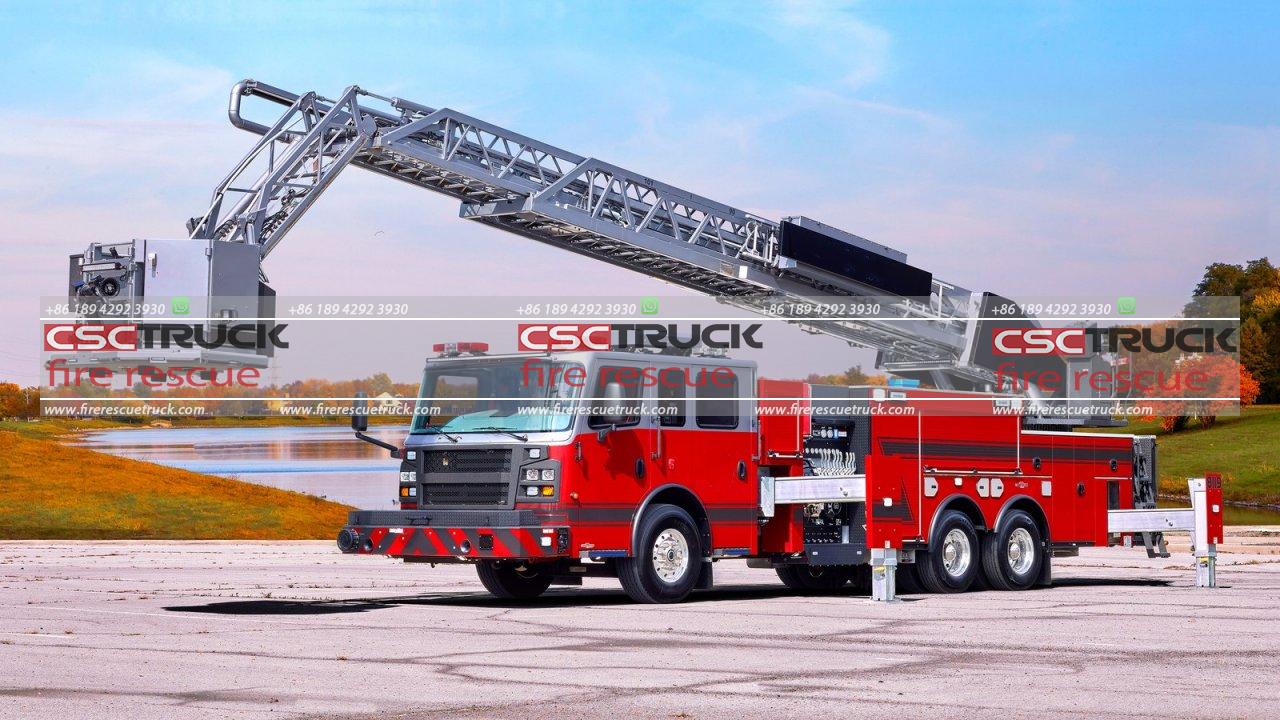
Safety Procedures
Aerial fire trucks are complex pieces of equipment, and they require specialized training to operate safely and effectively. Firefighters who operate aerial fire trucks must be familiar with the different types of aerial devices, as well as the safety procedures that must be followed when operating these devices.
Some of the important safety procedures that must be followed when operating an aerial fire truck include:
- Always check the aerial device for any signs of damage or wear before operating it.
- Never operate the aerial device in high winds or other hazardous conditions.
- Always have a spotter on the ground to help guide the aerial device.
- Never overload the aerial device.
- Always follow the manufacturer’s instructions when operating the aerial device.
Elevated Firefighting and Rescue Operations
Aerial fire trucks are essential for fighting fires in high-rise buildings, apartment complexes, and other tall structures. They can also be used for rescue operations, such as rescuing people from burning buildings or from other dangerous situations.
In a fire, aerial fire trucks can be used to:
- Reach the fire from above.
- Provide a safe platform for firefighters to work from.
- Deliver water to the fire from a distance.
- Rescue people from burning buildings.
Aerial fire trucks are also used for rescue operations in other situations, such as:
- Rescuing people from collapsed buildings.
- Rescuing people from high cliffs or other dangerous areas.
- Rescuing people from downed aircraft.
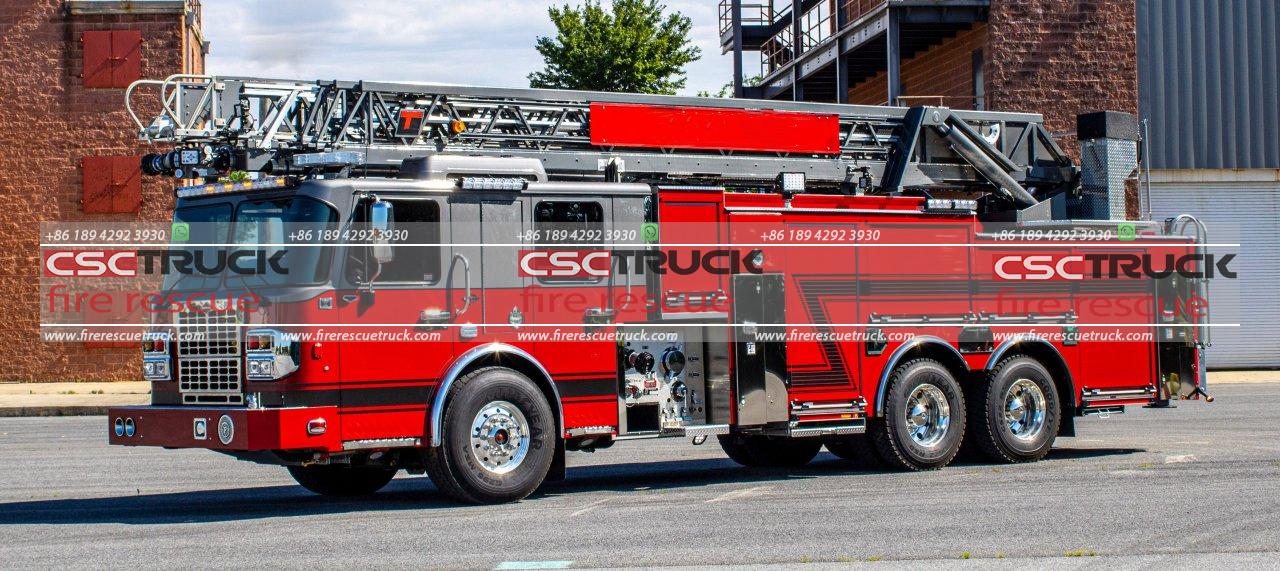
History of Aerial Fire Trucks
The first aerial fire trucks were developed in the late 19th century. These early trucks were simple in design, and they featured a telescoping ladder that could be raised and lowered using a hand crank. In the early 20th century, aerial fire trucks became more sophisticated, and they began to feature hydraulic systems that allowed the ladders to be raised and lowered more quickly and easily.
In the 1950s, aerial fire trucks underwent a major transformation. New designs allowed for the ladders to be extended to greater heights, and new features, such as baskets and water cannons, were added. These new aerial fire trucks were essential for fighting fires in the increasingly tall buildings that were being built at the time.
Today, aerial fire trucks are an essential part of the firefighting arsenal. They are used by fire departments all over the world to fight fires and to conduct rescue operations.
Future of Aerial Fire Trucks
The future of aerial fire trucks is bright. As buildings continue to get taller, aerial fire trucks will need to be able to reach even greater heights. New technologies, such as robotic arms and drones, are being developed that could revolutionize the way aerial fire trucks are operated.
In the future, aerial fire trucks may be able to operate autonomously, without the need for human operators. This would allow firefighters to focus on other tasks, such as fighting the fire or rescuing people.
Aerial fire trucks are an essential part of the firefighting arsenal, and they will continue to play an important role in the future. As new technologies are developed, aerial fire trucks will become even more sophisticated and capable. This will help to ensure that firefighters have the tools they need to protect the public from fire and other hazards.
Additional Information
- The National Fire Protection Association (NFPA) has established standards for aerial fire trucks. These standards ensure that aerial fire trucks are safe and effective.
- The International Association of Fire Chiefs (IAFC) has a committee that is dedicated to aerial fire trucks. This committee provides guidance and support to fire departments that are using aerial fire trucks.
- There are several manufacturers of aerial fire trucks. Some of the most well-known manufacturers include Pierce Manufacturing, E-One, and Rosenbauer.
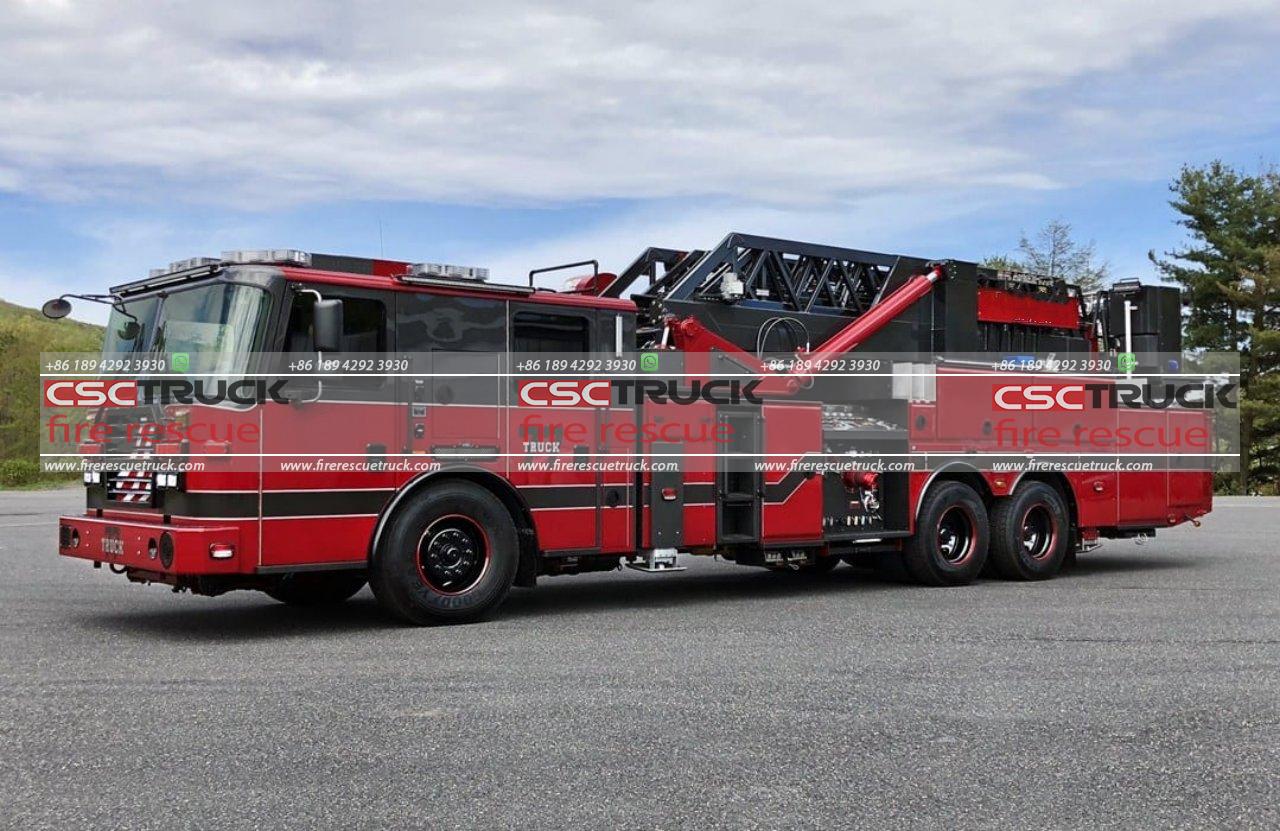
I hope this article has given you a better understanding of aerial fire trucks. These valuable pieces of equipment are essential for fighting fires and conducting rescue operations. By following the safety procedures outlined above, firefighters can operate aerial fire trucks safely and effectively. This will help to ensure that these valuable pieces of equipment are available to protect the public.
Conclusion
Aerial fire trucks are an essential part of the firefighting arsenal. They provide firefighters with the ability to reach elevated areas that would be otherwise inaccessible, making them essential for fighting fires in high-rise buildings, apartment complexes, and other tall structures. Aerial fire trucks can also be used for rescue operations, such as rescuing people from burning buildings or from other dangerous situations.
By following the safety procedures outlined above, firefighters can operate aerial fire trucks safely and effectively. This will help to ensure that these valuable pieces of equipment are available to protect the public.
